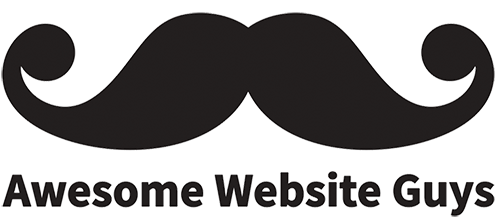Having a website isn’t a choice anymore in this digital era. More than 70% of small businesses have a website, and 43% of SMB owners plan to invest in improving website performance in 2021 and beyond.
Hence, creating a WordPress website for your business isn’t enough. You need to actually drive traffic to it if you want to make money online. This is often the biggest challenge. With SEO becoming more competitive than ever, attracting high-quality traffic to your website can be challenging.
Here’s where QR codes come into the picture.
Here’s a detailed guide to how you can use QR codes to drive traffic to your WordPress website.
QR Codes for Marketing and Driving Website Traffic
QR codes have emerged as a popular marketing tool for businesses, especially those with a physical presence. We are all aware of the conflict between digital and traditional marketing. Some say digital is the best, while others still talk in favor of traditional advertising.
Many businesses take a more robust approach by using digital and traditional marketing together. They have a WordPress website and run ads online, and simultaneously they give ads in newspapers and put up billboards. However, there’s a significant gap between the online and offline channels.
So, while these businesses invest in multi-channel marketing, they don’t reap its benefits. QR codes bridge this online-offline gap, thereby turning your multi-channel marketing strategy into an innovative omnichannel campaign.
Resolving Common Website Traffic Challenges
Suppose you’re an electronics retailer that sells mobile phones, laptops, TVs, and other consumer electronics products. You have a brick-and-mortar store in a large city, like New York. You also have an eCommerce website where people can buy products available in your store and get home delivery.
But how do you bring people to your website? SEO is a natural answer, but let’s be honest– an SEO strategy takes at least 3-6 months to show results. And if you don’t invest a lot of time and resources in SEO in the first few months, your website may never rank on the first page. This means no traffic to your website and no eCommerce sales.
Running search engine ads is another option, but it comes with its own challenges. First, paid ads require a lot of configuration and optimization. You need to bid on the right keywords and conduct A/B testing to ensure your ads are performing well. Second, paid ads can be quite expensive – $2.69 per click, to be more precise.
QR codes help you overcome this challenge. You can create a QR code, link it to your website, and put it up at various places, such as inside your store, on product packaging, etc. When customers enter your store or buy your product, they will be able to reach your website by scanning the code on their mobile devices.
You can also use QR codes on your offline marketing materials, such as billboards, brochures, and print ads. For example, suppose you want to promote your business in an area far away from your store location. You can put up billboards in those areas to promote your business and include a QR code on them. Link the code to your website. Customers can scan the code and order products online without visiting your store.
Hence, QR codes help you in two ways:
- By driving website to your WordPress website
- By increasing your eCommerce sales
How to Use QR Codes to Drive Traffic to Your WordPress Website?
If you’re still wondering how QR codes can really increase traffic to your WordPress site, hang in here. This section delves into a step-by-step process of using QR codes to drive traffic to your website.
Let’s get started.
Step 1: Create a QR Code
The first step is to generate a QR code. Many business owners think that QR codes are technical and complex to use. But contrarily, they are one of the easiest-to-use marketing elements you’ll ever come across.
All you need to do is open a QR code generator, enter the URL you want to link to the QR code, and generate the code. You can also change the code’s color, data, and frame. Besides, you can add your brand’s logo to give your QR code a customized look. And you can do it all for free.
QR codes are of two types: static and dynamic. Once a static QR code is created, the data linked to it can’t be changed. If you want to change the data, you’ll need to generate a new QR code.
If you don’t want to repeat the process over and over again, you can create a Dynamic QR code generator. This type of QR code allows you to change the data linked to it unlimited times without changing the code.
How is this helpful? Suppose you build a new WordPress website or change a product’s URL. If you have linked that URL to a QR code, you can update it without changing the QR code. This is beneficial in two ways. One, your customers won’t need to scan different QR codes. Second, you won’t have to replace your QR codes.
Step 2: Link it to the Right Destination(s)
The URL linked to the QR code will significantly impact its performance and the engagement it generates. If you link it to a page that your customers don’t want to see, it won’t produce any positive results.
So, which pages and posts should you link your QR code to?
The homepage is an obvious choice. If your only goal is to increase traffic to your WordPress website, you can link the code to your homepage’s URL. However, there are other possibilities as well that you can tap into.
This time, let’s assume you’re a salon business. Instead of directing people to your homepage, you can refer them to your appointment booking page. Or, if you’re a spa service provider, you can link the code to your services page showing the services you offer. Or, suppose you want to sell a particular product. In that case, you can link the code to that product’s page, allowing users to seamlessly buy the product.
As you can see, the opportunities are endless. Let’s look at some destinations where you can send your visitors other than the homepage.
- Shopfront (in case you’re an eCommerce website)
- A specific product page
- A blog post – to inform or educate the visitors
- A landing page – to generate leads
- A contact us page
- A file download page – in exchange for the email address to grow your email list
- Social media profile – if you want to grow your social following
Here are two important tips to keep in mind.
- Avoid using multiple QR codes linked to different destinations. Since QR codes look pretty much the same, users can find it difficult to remember the purpose of each code.
- Always include clear calls to action (CTAs) with each code to tell users what action they will complete by scanning the code.
Step 3: Put the Code at the Right Places
You have created a QR code and linked it to the destination of your choice. The next step is to decide where to put the code. Thankfully, QR codes are so versatile that you can put them almost anywhere. If you’re a salon owner, you can put them up on your store’s wall. If you’re a retail store owner, hotelier, or restaurant owner, put them up at your POS terminal.
Apart from inside your store, flyers, posters, and billboards work really well. If you’re running an offline advertising campaign, you can include a QR code to add a digital element to it. If you have business cards, they can be an excellent choice to include QR codes.
Which Businesses Should Use QR Codes?
Since QR codes are so versatile, every business can use them. However, some types of businesses are more likely to benefit from QR codes than others.
You should definitely be using QR codes if your customers physically interact with your brand. If you’re a retail store, your customers walk inside your store to buy products. If you’re a hotelier, your guests stay inside your hotel to avail of your services. If you’re a restaurant, your customers walk inside your restaurant to dine.
If you primarily interact with your consumers offline, engaging them online can be a challenge. Since QR codes bridge the online-offline gap, they can help you drive online engagement by directing customers to your website, mobile app, or social media.
That said, some businesses that can benefit the most from QR codes are:
- Retail stores
- Restaurants
- Hotels
- Spas and salons
- Local service providers (architects, home repair services, etc.)
Other Ways of Using QR Codes for Marketing
The benefits of using QR codes go beyond driving traffic to your website. If used correctly, they can enhance your marketing strategy and make it more effective.
Let’s look at some ways to use QR codes for marketing.
- Share your contact details, including phone number, email address, etc. Some QR codes even enable direct calling from the user’s phone.
- Increase mobile app downloads. You can link a QR code to the app download page to get more downloads for your app. Starbucks is a good example of brands using QR codes to drive app downloads.
- Share your business location with location QR codes. When users scan a location QR code, it directs to the Google Maps app and automatically turns on the navigation to the target destination. This can be helpful in guiding customers to your store.
- Increase your social media engagement. You can link QR codes to your social media profiles the same way you link them to your website. Users can scan the code and reach your social media profile without the need to open the app and search for your business.
- Share product information. Customers are smarter than ever, and they want to know everything about the products they buy. You can cater to this need by including a QR code on your product packaging and linking it to a video or PDF that provides in-depth information about the product.
- Share coupon codes. A popular use of QR codes is to share discounts and coupon codes. You can create a discount QR code, and upon scanning it, users will receive a coupon code. They can then visit your store and show the coupon code to avail of the discount.
Conclusion
QR codes have emerged as one of the most lucrative marketing tools in 2021. They can drive traffic to your website and help you increase engagement, sales, and revenue. QR codes can also help you share information, contact details, coupon codes, and more. Furthermore, QR codes are effortless to use, making them a must-use marketing technology for every business.
Guest post by Akshay Deogiri, an SEO outreach specialist at Beaconstac, a company enabling businesses to bridge their gap between the digital and offline worlds through custom QR codes.
Valerie Hare
Valerie is a Content Strategist at Awesome Website Guys. She has a background in web development and writing. When not working, she enjoys going to the beach, walking her dog, and chilling with her family.

